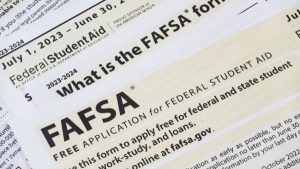The Free Application for Federal Student Aid (FAFSA) has been plagued with errors and issues for many years, and yet another one has recently come to light. This latest error, like so many before it, is an unforced error – a mistake that could have been easily avoided with proper oversight and attention to detail.
The FAFSA form is used by millions of students every year to apply for financial aid for college. It is a crucial document that determines a student’s eligibility for various forms of federal and state aid, including grants, loans, and work-study programs. Any errors on the form can have serious consequences, potentially impacting a student’s ability to access the funds they need to pursue their education.
The latest error in the FAFSA fiasco involves a glitch in the form that improperly calculates a student’s Expected Family Contribution (EFC). The EFC is a key figure that determines how much financial aid a student is eligible for, based on their family’s income and assets. When the EFC is calculated incorrectly, it can lead to students being awarded less aid than they are actually entitled to, or in some cases, being denied aid altogether.
This error is particularly troubling because it disproportionately affects low-income students and students of color. These students are already more likely to face financial barriers to accessing higher education, and errors in the FAFSA form only serve to further disadvantage them.
What makes this error even more frustrating is that it is entirely preventable. With proper oversight and testing, these kinds of glitches could have been caught and fixed before the form was released to students. However, once again, a lack of attention to detail and a failure to prioritize the needs of students has resulted in yet another unforced error in the FAFSA fiasco.
It is unacceptable that students are being put at risk of losing out on crucial financial aid due to avoidable errors in the FAFSA form. The Department of Education must take immediate action to address this issue and ensure that all students are receiving the aid they are entitled to. In the meantime, students and their families should double-check their FAFSA forms for any errors and reach out for assistance if they suspect something is amiss.
Ultimately, the FAFSA fiasco highlights the need for a complete overhaul of the financial aid system. Students should not have to jump through hoops and contend with errors just to access the funds they need to pursue their education. It is time for the Department of Education to step up and prioritize the needs of students, rather than allowing these unforced errors to continue unchecked.



